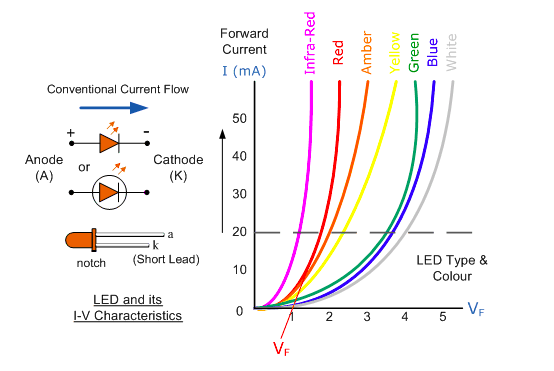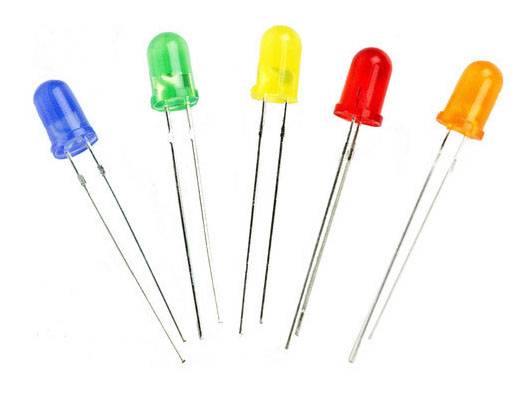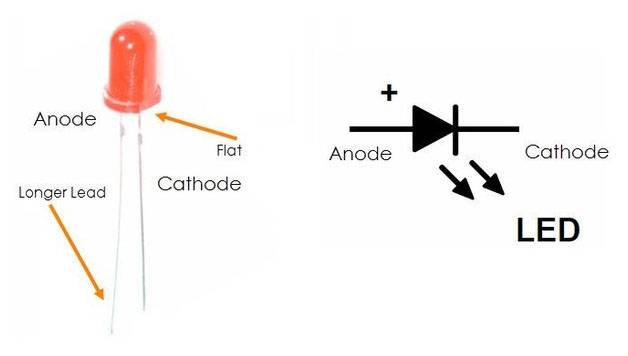Introduction to LED
The “Light Emitting Diode” or LED
In the simplest terms, a
Since light is generated within the solid semiconductor material, LEDs are described as solid-state devices. The term solid-state lighting, which also encompasses organic LEDs (OLEDs), distinguishes this lighting technology from other sources that use heated filaments (incandescent and tungsten halogen lamps) or gas discharge (fluorescent lamps).
Symbol of a Light Emitting Diode
Light-Emitting Diode Colours
Inside the semiconductor material of the LED, the electrons and holes are contained within energy bands. The separation of the bands (i.e. the bandgap) determines the energy of the photons (light particles) that are emitted by the LED.
The photon energy determines the wavelength of the emitted light, and hence it’s color. Different semiconductor materials with different bandgaps produce different colors of sunshine. The precise wavelength (color) is often tuned by altering the composition of the light-emitting, or active, region.
LEDs are comprised of compound semiconductor materials, which are made from elements from group III and group V of the table (these are referred to as III-V materials). samples of III-V materials commonly wont to make LEDs are gallium arsenide (GaAs) and gallium phosphide (GaP).
Until the mid-90s LEDs had a limited range of colors, and especially commercial blue and white LEDs didn’t exist. the event of LEDs supported the gallium nitride (GaN) material system completed the palette of colors and opened many new applications.
Main LED materials
The main semiconductor materials used to manufacture LEDs are:
- Indium gallium nitride (InGaN): blue, green and ultraviolet high-brightness LEDs
- Aluminum gallium indium phosphide (AlGaInP): yellow, orange and red high-brightness LEDs
- Aluminum gallium arsenide (AlGaAs): red and infrared LEDs
- Gallium phosphide (GaP): yellow and green LEDs
Types of Light Emitting Diode
- Gallium Phosphide (GAP): Red, Yellow and Green
- Aluminium Gallium Phosphide (AlGaP): Green
- Gallium Nitride (GaN): Green, Emerald Green
- Gallium Indium Nitride (GaInN): near-ultraviolet, bluish-green and blue
- Silicon Carbide (SiC): Blue as a substrate
- Zinc Selenide (ZnSe): Blue
- Aluminium Gallium Nitride (AlGaN): ultraviolet
- Gallium Arsenide (GaAs): Infra-Red
- Gallium Arsenide Phosphide (GaAsP): Red to Infra-Red, Orange
- Aluminium Gallium Arsenide Phosphide (AlGaAsP): High-brightness Red, Orange-Red, Orange, and Yellow
Light Emitting Diodes I-V Characteristics.



